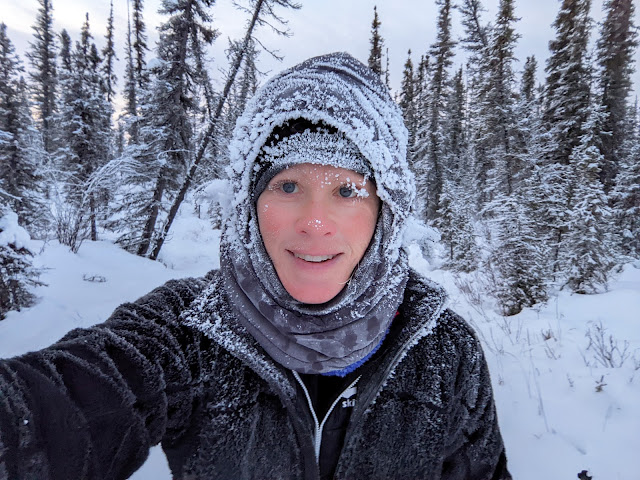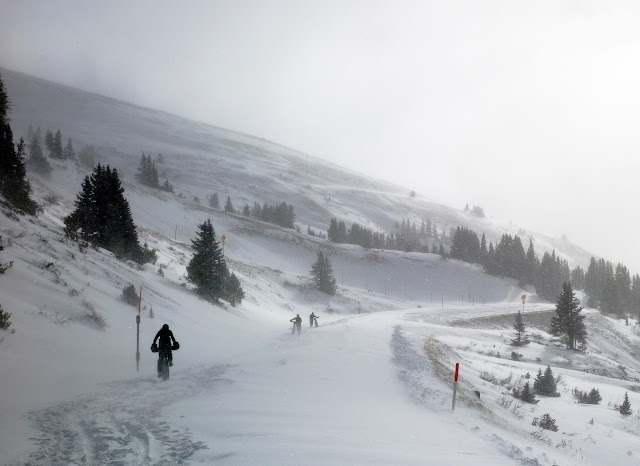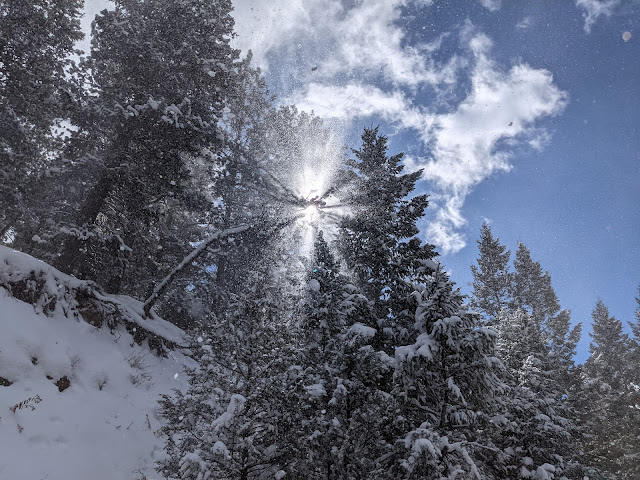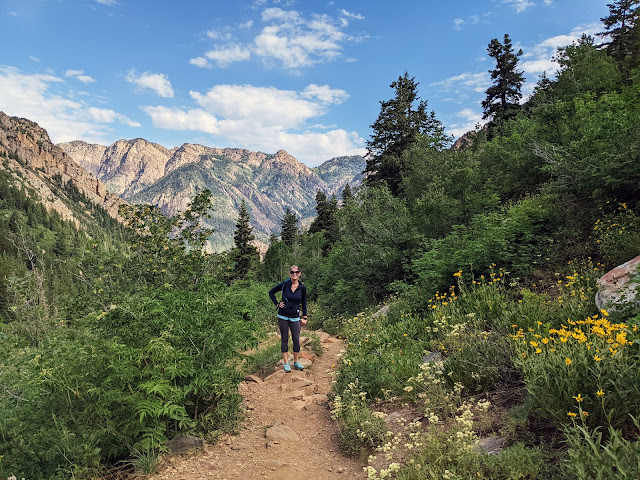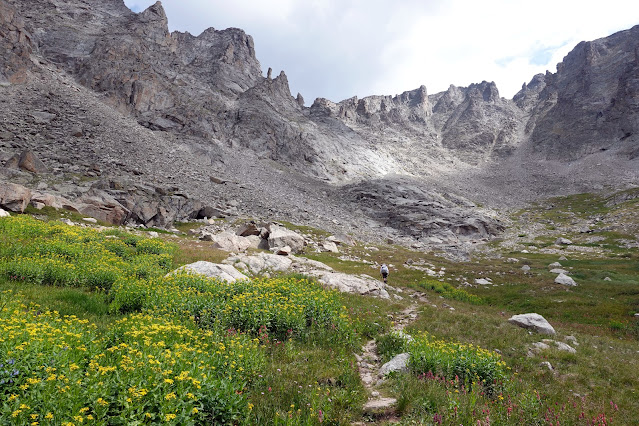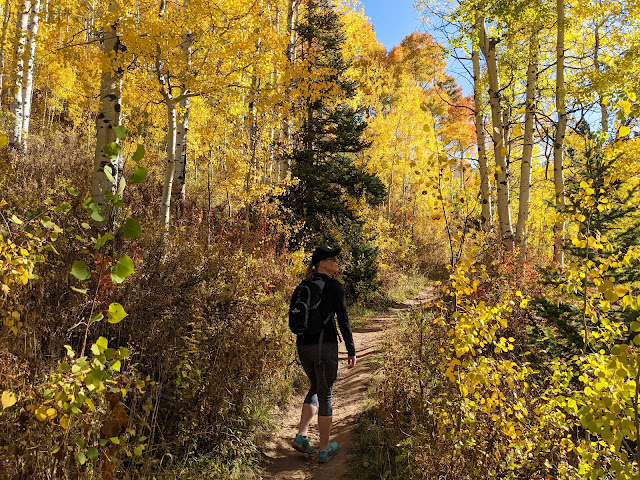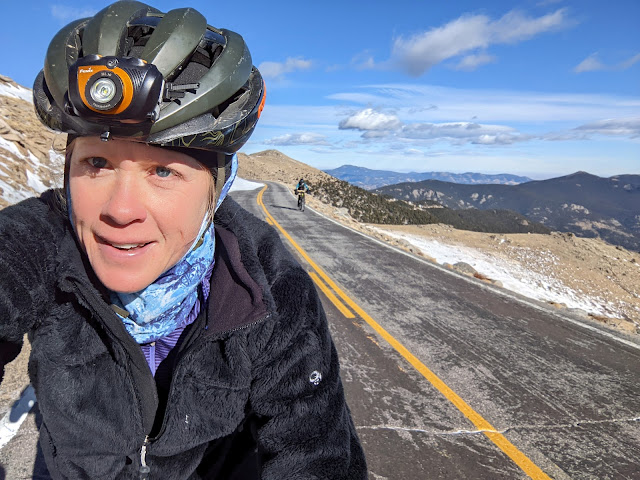
2021 was a weird training year for nearly everyone. Early in the year, a lot of us were still "virtual racing" and it wasn't clear that any of our scheduled events would actually go. I charged into 2021 with vigor and subsequently collapsed, more than once. I accomplished a couple of athletic goals that I could maybe feel proud about. But no ... not really. I'm in a strange place right now — do I still want to dabble in the occasional race? Do I want to go all-in for something specific so I can focus my training in a way that will at least be new and interesting? Do I want to quit racing altogether?
One thing I do know is that "training" gives me a daily meditation and yes, a small sense of purpose, without which I may not have weathered 2021. After June, it stopped mattering whether I was training for anything. I just kept going, with whatever time I could spare in the day, working around whatever little physical injury I was nursing. I rarely felt tired or sore — managing everything else about life was more difficult by orders of magnitude, so exercise was a way to "rest."
By early October, I realized I was on pace to hit a longtime goal, which is climbing one million feet in a calendar year (1 million feet is the cumulative total between all of my workouts.) I quickly let the idea go after being hit by the side mirror of a truck on Oct. 10, which resulted in back pain and limited my tolerance for cycling and wearing a backpack. Over Thanksgiving, when I still had nearly 100,000 feet to go, I swung around again and thought "why not?" Here was a ready-made excuse to stomp up and down mountains to my heart's content. So I formulated "Climb-cember" and set out to log at least 4,000 feet of climbing every day until the Solstice. (I wanted to wrap up the goal before we headed to Alaska.)
I loved "Climb-cember." I didn't have to justify any of the silly things I was doing — marching up Ennis Peak in Utah a couple of times or repeats on the Eldo Canyon overlook trail in a subzero windchill. My daily meditation gained tangible purpose, which was of course just the purpose of an arbitrary goal. But it was all-around wonderful.
It helped that December gifted me with unseasonal weather that made summer activities possible during the darkest month of the year. By December 19, I only had 5,000 feet left to go. With a glance at the forecast and consideration of the dismally low snow totals thus far this season, it occurred to me that I could log my final vertical mile with an audacious mountain bike ascent of a Colorado 14er, Mount Evans. I mentioned my plans to Eszter as we were ascending Green Mountain two days prior, and she was game to join.
We started out from Idaho Springs on a 28-degree morning with a light breeze sweeping down the canyon. Neither of us was well-acclimated to the cold, and my back became stiff and sore early in the ride. I will admit, completing a seven-hour ride with 7,000 feet of climbing and three liters of water on my back after two months of minimal riding was not great for my ongoing recovery, but I deemed this adventure worth it (and still do.)
We chatted and pedaled for hours, turned serious to fight the buffeting headwind above treeline, stopped to watch bighorn sheep until our hands froze, took one coffee break in the middle of the road, and reached the 14,265-foot summit one day before Winter Solstice. Ambient temperatures were in the low teens with an oh-shit windchill. We had nothing but two hours of descending in front of us. I brought all of my puffiest layers to weather the chill — Eszter said I looked like Michelin Man — and regretted nothing. I had reached my million-feet goal unceremoniously somewhere around 12,500 feet and looked forward to coasting through the rest of the year (in Alaska, dragging a loaded sled through styrofoam snow at 25 below.)
With that, here are my stats for the year:
2021 in numbers:
Bike: 5,225 miles with 549,078 feet climbing
Run/Hike: 1,613 miles with 464,745 feet climbing
Total: 6,838 miles with 1,013,823 feet climbing
Total hours: 1,036 (43 days and 4 hours)
❅❅❅❅❅
Usually, when I write this post, I break down my month-to-month stats. I didn't feel like doing that this year, so for my own entertainment, I looked over my Strava calendar and chose a notable workout from each month.
January 8: Pb Pursuit
Snow ride
Leadville, Colorado
125 miles, 11,693 feet climbing
Elapsed time: 30 hours, 8 minutes
The Fat Pursuit, a 200-kilometer winter bike race in Island Park, Idaho, had been cancelled and moved to "virtual" status. A few friends and I figured we could mimic the conditions of a high-altitude snow race to near-perfection in Leadville, where deep snow and punchy climbs torn up by paddle-track mountain snowmobiles are the norm. It's exhaustively slow and difficult cycling, but the scenery is stunning! I proposed a figure-eight route that was 41 miles with 4,000 feet of climbing, to be ridden three times. Five of us started our "Pb Pursuit" at the crack of noon. I was the only one who stuck it out to the end, as the whole thing was quite silly, but I had so much fun. My favorite parts were riding through the zero-degree night around a moonlit Turquoise Lake, taking a four-hour nap in my big sleeping bag, and of course the first few hours when we all stuck together, laughing and sweating in the weirdly hot glare of a sunny winter day at 10,000 feet.

February 11: Old Man Winter Bike Rally
Winter "gravel" ride
Lyons, Colorado
63 miles, 5,151 feet climbing
Elapsed time: 5 hours, 12 minutes
I am a fan of virtual racing. Not necessarily the type where you take something like the 2,800-mile Tour Divide and ride a similar distance over many months on your indoor trainer (come on, that's just a different thing altogether.) But when you can challenge a popular course without the crowds at your leisure, that's good fun! The morning I picked to challenge the Old Man Winter 100K route turned out to be a poor choice. It was much colder than it had been in previous weeks, so my water bottles froze. And the air quality was terrible, causing breathing issues that day and (I believe) a spike in anxiety and deterioration in mental health following the ride. Still, I tried. My stretch goal was five hours and I nearly hit it for the official course (5:03. I know that seems slow for 100K, but keep in mind I never train to ride flat terrain with any speed, my bike had studded tires to slow the paved climb, and then there were two full miles of hiking through rotton ankle-deep snow. So I consider it a good time for a winter ride.) Anyway, despite the consequences that in hindsight were quite bad, I did enjoy my "race."

March 5: Glacier Gorge explores, winter edition
Snowshoe hike
Rocky Mountain National Park, Colorado
17.3 miles, 3,904 feet climbing
Elapsed time: 8 hours, 9 minutes
The weeks after February 11 were a rough time for my mental health, but mountain excursions in March helped boost my brain closer to baseline. This was one of my favorites — avalanche risk had settled several days after a storm but there wasn't much in the way of broken trail. I set my own track for a long solo trudge amid the stunning skyline above Glacier Gorge.
April 10: Grand Staircase bikepack day three
Bikepacking
Grand Staircase Escalante National Mounument, Utah
50.7 miles, 5,246 feet climbing
Elapsed time: 9 hours, 45 minutes
In April, my friend Erika and I set out for a three-day trip around the Grand Staircase Escalante bikepacking loop, a 160-mile route through the incredibly remote southeastern corner of Utah. It's a gorgeous route that I would do again, but the terrain is difficult, the services are few, and the sand can be soul sucking. Erika and I were unintentionally separated the second night. She opted to ride the highway back to Escalante, so I ended up solo on what turned out to be the most difficult day of the trip — rolling along a high rim on barely-used doubletrack, far from any glimmer of a water source, in 85-degree heat. I had just four liters of water left from the 10 I'd packed from Big Water the previous day. In the late morning, miles from where I'd seen the last vehicle, I met a little dog who was alone, skinny and very thirsty. I gave him some beef jerky and water in a folded ziplock bag. After initially running and hiding from me, he lapped up my offering and then followed me for the next ten miles. He was visibly straining to keep up when I was moving at riding speeds, and darted into the meager shade for rest whenever I slowed to push. I still had 25 miles to ride to Escalante and feared what might happen if he followed me the whole way. I continued sharing water with him, but I didn't have much to spare ... at that point, I didn't even have enough to keep myself happy. Happily, I encountered a local couple in an enormous truck — the crumbling road was supposedly closed to vehicle traffic, so I didn't expect to see anyone. I flagged them down. The elderly man, who reminded me so much of my paternal grandfather, was initially surly about the prospect of rescuing this dog, but still spent 20 minutes working with me to corral the reluctant canine into his cab. A couple of hours later, I did end up running out of water, but thankfully rode by the single remaining patch of snow on the mountain exactly when I needed it most. It was, all in all, a most fortuitous day.
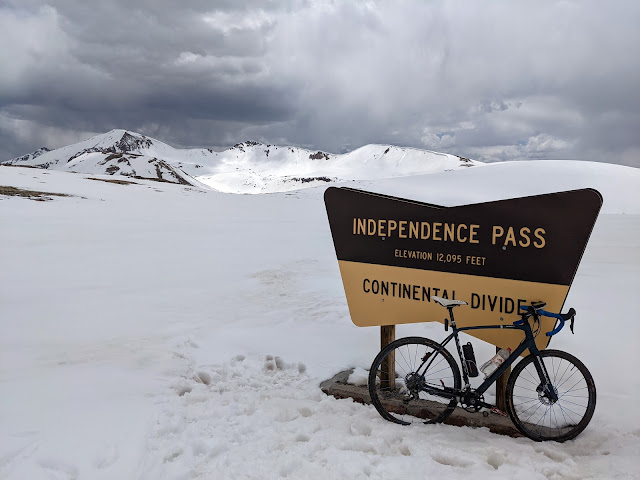
May 14: Independence Pass from Mushroom Gulch
Gravel ride
Buena Vista, Colorado
118.6 miles, 7,759 feet climbing
Elapsed time: 10 hours, 14 minutes
I was meeting friends in Buena Vista for an 80-mile gravel ride, and decided to head out a day early and complete a long solo ride to log 200 miles in two days. What was I training for? I don't even remember, but I did have summer ambitions before everything fell apart. This ten-hour ride was particularly enjoyable — just gorgeous scenery and appropriate difficulty while mostly feeling good the entire day. I did a lot of ruminating about life and the universe while listening to a Carl Sagan book, and emerged with a positive outlook — easy to cultivate when Covid seemed to finally be waning, air quality was pristine, and prospects for the rest of the year looked bright. May 2021 was a good month. I miss it.

June 13: Ride to End ALZ
Road ride
Fort Collins, Colorado
100.1 miles, 5,505 feet climbing
Elapsed time: 6 hours, 52 minutes
I had effectively forgotten about this ride before I scrolled through my Strava calendar the other day. It was three days before my dad died. A California friend recruited Beat and me to join his team to raise money for the Alzheimer's Association. We completed a virtual event in April, and then the organization invited me back to an in-person event in June. I signed up for the century, because of course, and managed to raise more than $3,000 for Alzheimer's research between the two events. This was a hot day with a huge climb in the middle, my time to shine. (Most of the ~four dozen 100-mile participants were from out of town and not acclimated to the altitude.) I rode steady but well and (I believe) finished in fourth position overall, but of course it was not a race so I will never know for sure.
July 5: Evening LCC
Road ride.
Sandy, Utah.
34.9 miles, 5,023 feet climbing
Elapsed time: 3 hours, 21 minutes
When I think of the weeks between mid-June and mid-July, all I remember is the hot heat, oppressive sun, summer haze and zombie daze that I could only shake myself out of, somewhat, during hard climbs on my gravel bike. I spent four weeks in Utah to help Mom transition to her new life without Dad. Much of the time was spent sitting in rooms, sorting through stuff with Mom and crying with my sisters. I barely slept and was often up well before dawn pedaling the empty streets of Draper and Alpine. In the evening, after dinner, I made a regular habit of climbing Little Cottonwood Canyon until the sun set and then descending into the twilight. The darkness, quiet and chilled mountain air brought me a measure of peace that I didn't find anywhere else.
August 23: Orsières to Glacier d'Orny
Hike
Orsières, Switzerland
16.9 miles. 8,807 feet climbing
Elapsed time: 9 hours, 32 minutes
My father's death and subsequent life difficulties left me unexcited and anxious about traveling to Europe and Beat's plans to race another PTL (An extreme 200-mile mountain ultra with a lot of difficult terrain and exposure.) Luckily I was in a perfect position to turn to my best coping mechanism, marching up and down mountains. During the week of August 23 to August 29, I logged 111 miles with 48,968 feet of climbing, all on foot. PTL started the morning of August 23 in the idyllic Swiss village of Orsières. After Beat and his team took off, I marched away from PTL's starting banner and straight up the closest trail that would take me as high as possible. It was, for the most part, a dreary and foggy day with light rain and stiff winds. Beat's team was mired in low visibility as they crawled along the horrific sawtooth of a crumbling knife ridge on the other side of the valley. In the meantime, I managed to find the most brilliant sucker hole and then climb above the clouds for jaw-dropping views of Glacier d'Orny and the Trient ice field (shown with an impressive 3,170-meter mountain hut, Cabane du'Trient, in the foreground.) I was feeling sparks of real joy, an almost alien sensation that I hadn't experienced in more than two months.

September 19: Rochers de Naye for our anniversary
Hike
Villenueve, Switzerland
13.5 miles, 5,561 feet climbing
Elapsed time: 5 hours, 24 minutes
We visited many stunning and scenic places in Switzerland and Germany during our month in Europe this year. But honestly, one of my favorite outings was a fogged-in summit over Lake Geneva during my final day in Switzerland. We were en route to Geneva so I could get a COVID test and catch a flight first thing in the morning, but I wanted to mark our anniversary. (Beat was pretty cute about it whenever I mentioned our anniversary. He asked, more than once, "So what is this? The tenth?" and I replied, "No, it's our wedding anniversary. Our first wedding anniversary. Remember how we got married last year?" After a solid month of ideal weather, we were finally hit with a typical autumn day in the Alps: Temperatures near freezing, high winds, spitting rain, sleet, and zero visibility. It didn't even matter. We had so much fun! How lucky am I to have this man in my life?

October 9: Top of the World with Lisa and Sara
Hike
Aliso Viejo, California
8.1 miles, 1,179 feet climbing
Elapsed time: 3 hours and 34 minutes
The first weekend in October was supposed to be the annual rim-to-rim crossing of the Grand Canyon with my Dad. And for the first time, my sisters were on board to join. It was not to be, and this year was too soon for the three of us (although I hope it happens someday, perhaps next year.) Instead, we blocked out the weekend to spend together at Sara's home in Orange County. My sisters had long dropped their Grand Canyon training regimen so didn't expect much hiking, but we ended up out for an excursion every day. These hikes were really special — beautiful California hills, the Pacific, and great conversations with my sisters. Our final hike took us to a lovely overlook above Laguna Beach called "Top of the World." It's notable to me now that on October 9 I was on top of the world, and my very next Strava activity was titled “First time I’ve been hit by a truck.” Seriously, 2021.
November 26: Gobbler’s Knob with Raj and Beat
Hike
Big Cottonwood Canyon, Utah
8 miles. 3,176 feet climbing
Elapsed time: 3 hours, 57 minutes
Of everything I tried to help process my grief after Dad's death, this hike was among the most meaningful. For much of the past decade, Dad and I kept a Thanksgiving tradition of hiking to the summit of Gobbler's Knob on Black Friday. I wanted to carry on the tradition with Beat and a Salt Lake friend who was a good friend of my Dad's, Raj. The whole climb proved to be so much more difficult than I expected — all of the memories washing over me, followed by the suffocating shock of having to face Mount Raymond at close range. The emotional pain overshadowed what was already a physically painful endeavor, thanks to my sore back, sloppy trail conditions and a large backpack. I was a mess, but Beat and Raj were very supportive, and ultimately we did reach the top. The peace and gratitude I found was well worth the difficulty.
December 24: Colorado Creek cabin trip in
Sled-drag
White Mountains, Alaska
13.4 miles, 1,427 feet climbing
Elapsed time: 6 hours, 22 minutes
After a strange 21 months of absence, Beat and I finally made it back to Alaska. As the initial shock of grief wanes, it's been interesting to experience a seemingly longer-term shift in my psyche. My appetite for adventure just isn't there. I continue to crave the meditative benefits of movement — Climb-cember proved a huge success in this regard — but my head and heart seem to have lost the capacity for bigger, bolder endeavors. So I have made no solid plans for 2022, and am struggling with what to do about the Iditarod.
Early in 2021, I signed up to bike to Nome (I'm now a definite no on that. It's a leap too far.) I'm currently set on sticking with the short race to McGrath, most likely on a bike, just because a week in the frozen wilderness may prove beneficial and wonderful ... or it may just be another emotional disaster, like the Utah Mixed Epic. I'm genuinely frightened about that prospect, especially now that my brain has rebooted to a setting that doesn't recognize any part of dragging a bike through the snow for 300 miles as particularly desireable. Seriously, what have I been doing for the past 16 years?
But ... I did enjoy our trip to Alaska. The weather was unworkable and we had to scale back our backcountry plans dramatically, but I still enjoyed being out in one of my favorite places in the world, the White Mountains, when it was 26 below and the only sound was the squeak of my feet on the cold snow, or a distant echo of footsteps from an animal seemingly miles away.
It's difficult to feel ambitious right now, and even more difficult to feel optimistic. But I do look forward to the small moments in 2022, the simple pleasures, the beauty in my backyard.
Happy New Year; I am grateful we've all made it this far.









































